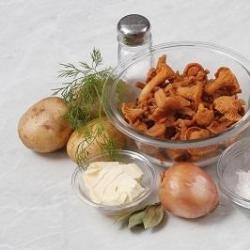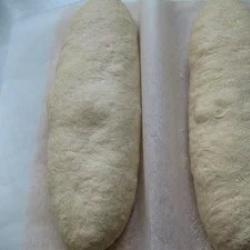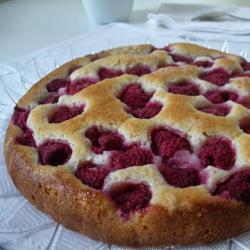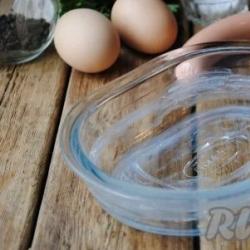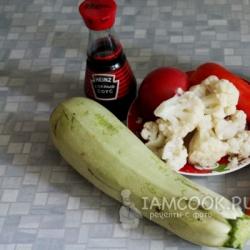Independent work (outside GCD). Greatest common divisor. Least common multiple Independent work on nok and node
Type of work -practicing drawing techniques and displaying object images.
Target: PC 2.5 organize the productive activities of preschoolers (drawing, modeling, appliqué, design; PC 2.7 analyze the process and results of organizing various types of activities and communication of children; OK 2 organize their own activities, determine methods for solving professional problems, evaluate their effectiveness and quality; OK 5 use information and communication technologies for improving professional activities.
The task takes 3 hours to complete.
Assignment: Using an Internet resource (see the “Catalog of Internet Resources” for the methodological manual), get acquainted with the technique of drawing various images. Practice the technique of showing 3-4 images of birds and animals.
In the process of practicing the display technique, it is necessary to use a vertically located sheet of A3 paper, gouache paint, and a brush. Draw 3-4 images in the manual using gouache, colored pencils and felt-tip pens.
Prepare to demonstrate the technique of showing birds and animals during a practical lesson outside the GCD (you can use a faintly drawn outline with a simple pencil).
Reporting form: drawn images and readiness for practical demonstration (samples for the “Pedagogical Piggy Bank”).
Criteria for evaluation:
· Quality of the resulting image (recognizability of the image, compositional correspondence to the sheet and paper);
· Verbal accompaniment;
· The process and result of the display should be clearly visible to children.
Possible tasks that allow you to study the features of pedagogical conditions for the artistic and aesthetic development of preschool children that exist in the practice of preschool educational institutions
Type of work:
Parent survey: in order to identify their ideas on the problem of artistic and aesthetic development by preschoolers.
Conclusion:
Questionnaire for parents
Dear parents _________________________________ (child's name)
Please answer the questions provided in the questionnaire.
Your sincere answers will help to study the problem most deeply and outline ways to improve the pedagogical process in kindergarten.
1. At what age do you think the purposeful artistic and aesthetic development of a child is necessary?________________________________________________
2. From your point of view, the artistic and aesthetic development and education of children should, to a greater extent, be aimed at (choose the statement that corresponds to your opinion):
Development of skills to feel beauty, respond to beauty
Formation of some art knowledge
Development of interest in art,
Developing interest in creative leisure, crafts (embroidery, weaving, designing)
Mastery of productive activities (sculpting, drawing, designing)
Self-expression, manifestation of emotions, feelings
Creative experience
Experience in working with different materials (sand, clay, sanguine, coal, etc.), experimenting with them;
Development of certain qualities (independence, organization, ability to plan activities)
Another variant_____________________________________________________________
3. What types of children's productive activities are most interesting to your child (mark with the + symbol)? Do you consider it mandatory to attend preschool (mark with v)?
Drawing
Application
Artistic work (embroidery, weaving, etc.)
Construction and design
Comments_______________________________________________________________
4. Which direction of design activity is more preferable for you (in the development of decorative activities in your child and are you ready to participate with him)?
Painting toys in the style of folk crafts
- “designing” puppet and carnival clothes
Making postcards, bookmarks, etc.
Decorating objects (boxes, vases, disposable glasses, etc.) and making simple objects (key chains)
Making a patchwork doll, etc.
making New Year's toys, Christmas tree models, costumes
production of city models, insolations, unusual souvenirs
Layout of visiting decorations for the holidays (garlands, etc.)
Your option_______________________________________________
5. Does your child often draw, sculpt, or design?____
6. Does your child often pay attention to “beauty” in the world around him (natural objects, beautiful little things in everyday life, etc.)______ ________________________________________
7. Does the child use interesting words (figurative comparisons, exaggerations, comparative forms) when he sees something beautiful or ugly (Name typical or favorite ones)______________________________________________________________
8. How does a child typically behave when he notices something beautiful __________________________________________________________
9. How does your child’s desire for beauty manifest itself?_________________________________________________________________
10. Does your child ask questions about art? asks for clarification of some words (for example - what is beauty? Landscape? Sculpture? Designer?)__________________________________________
11. Does your child ask to buy new pencils, paints, plasticine, books with interesting illustrations?________________________________________________________________
12. When your child brings work (drawings, applications) from kindergarten, who does he want to show it to, how does he show his “pride” or his unwillingness to show it ___________________
13. Are you involved in any artistic activity, craft, or “artistic leisure”?___________________________
14. Do you have a collection of children's works at home? Comments (who started collecting, what is presented, how the works “get” into the collection?)?__________________________________________
15. If a child gets carried away and begins to dirty a piece of paper or “play around” with paints, your typical reaction is _____________________________________________
16. Please name the difficulties that arise in the process of drawing (sculpting, appliqué or design) for your child?_____________________________________________
17. Are you ready to take part in any events organized in kindergarten in the direction of the artistic and aesthetic development of preschoolers (making costumes together with children, drawings, creative competitions)? Which ones? _________________________ Comments_______________
18. Formulate your wishes to teachers, preschool educational institutions in terms of organization, conduct, and content of work on the artistic and aesthetic development of children _________________________
APPLICATION
FINE ARTS, DECORATIVE ARTS
http://inka.duma.midural.ru/
Are you interested in teaching fine arts? Come on in! On the site you will find developments for teaching the course "Fine Arts", MHC. Methods, programs, articles. Program "Fine Arts and Its History". Methodology for diagnosing the level of development of visual thinking. To help educators and primary school teachers.
All-Russian Museum of Decorative and Applied Artshttp://vmdpni.ru/
Related information.
Independent work in mathematics Greatest common divisor. Coprime numbers grade 6 with answers. Independent work includes 2 options, each with 6 tasks.
Option 1
1.
a) 4 and 8
b) 18 and 48
c) 45 and 98
2.
a) 425 and 625
b) 532 and 665
c) 36, 72 and 198
3.
a) 28 and 36
b) 3; 5 and 26
4. Each of the identical sets of dishes contains glasses and glasses. A total of 35 glasses and 21 glasses. How many sets are there in total? How many glasses and glasses are there in each set?
5. Write down all proper fractions with a denominator of 18 in which the numerator and denominator are mutually prime numbers.
6. In how many ways can 5 passengers fit in a 6-seater boat?
Option 2
1. Find all common divisors of numbers:
a) 5 and 15
b) 12 and 48
c) 51 and 65
2. Find the greatest common divisor of the numbers:
a) 232 and 261
b) 124 and 148
c) 24; 48 and 54
3. Are the numbers coprime?
a) 36 and 37
b) 2 and 14
4. The same New Year's gifts contain only 26 chocolates, 11 7 chocolates and 169 caramels. How many gifts are there in total? How many chocolates, chocolates and caramels are in each set?
5. Write down all proper fractions with a denominator of 22 in which the numerator and denominator are not mutually prime numbers.
6. In how many ways can 4 passengers fit in a 6-seater boat?
Answers to independent work in mathematics Greatest common divisor. Coprime numbers grade 6
Option 1
1.
a) 1, 2, 4
b) 1, 2, 3, 6
in 1.
2.
a) 25
b) 133
c) 18
3.
a) no
b) yes
4. 7 sets, 5. glasses and 3 glasses
5. 1/18, 5/18, 7/18, 11/18, 13/18, 17/18
6. 720 ways
Option 2
1.
a) 1.5
b) 1, 2, 3, 4, 6, 12
in 1.
2.
a) 29
b) 4
at 6.
3.
a) yes
b) no
4. 13 gifts; 2 chocolates; 9 chocolates and 13 caramels
5. 2/22, 4/22, 6/22, 8/22, 10/22, 11/22, 12/22, 14/22, 16/22, 18/22, 20/22
6. 360 ways














 Back forward
Back forward
Attention! Slide previews are for informational purposes only and may not represent all the features of the presentation. If you are interested in this work, please download the full version.
Technological lesson map
| Lesson type | Combined | ||
| The purpose of the lesson | Repeat and consolidate the signs of divisibility; prime and composite numbers, develop the ability to find GCD and LCM and apply the algorithm for finding GCD and LCM to solve problems. | ||
| Lesson Objectives | educational | developing | educational |
| Update knowledge on topics: decomposition of numbers into prime factors; prime and composite numbers, GCD and LCM. Repetition and consolidation of acquired knowledge. Ability to apply mathematical knowledge to problem solving. |
Expanding students' horizons. Development of techniques of mental activity, memory, attention, ability to compare, analyze, and draw conclusions. Development of cognitive activity, positive motivation for the subject. Development of the need for self-education. |
Fostering a culture of personality, an attitude towards mathematics as part of universal human culture, playing a special role in social development. Developing responsibility, independence, and the ability to work in a team |
|
| Cognitive UUD: | They develop skills of cognitive reflection as awareness of actions and thought processes, and master problem solving skills. learning the ability to independently identify and formulate a cognitive goal, search and highlight the necessary information with the help of independent work and questions from the teacher. | ||
| Improve the ability to consciously and voluntarily construct a statement in oral and written form, analyze objects in order to highlight essential features for drawing up an algorithm, learning the ability to put forward a hypothesis; | Communicative UUD: | ||
| Develop the ability to participate in discussions; express your point of view clearly, accurately and logically; Regulatory UUD: |
Personal UUD: They learn to independently evaluate and make decisions that determine the strategy of behavior, taking into account civic and moral values. creating a situation for setting a learning task based on knowledge about divisors and multiples of natural numbers; predicting the result of the level of mastery based on the concepts of divisors and multiples, GCD and LCM. Teaching control skills in the form of comparing the results of independent work with solving tasks on the board in order to detect deviations and differences from the sample, assessing what has already been learned and what still needs to be learned on the topic; |
||
Learn the ability to conduct dialogue based on equal relationships and mutual respect
During the classes
Stage 1. Organizing time.
Stage 2. Updating knowledge and recording difficulties in activities.
Homework check (problem and equation)
Oral work (children rate their knowledge at the beginning of the lesson)
- Questions:
- What numbers are called natural numbers?
- Definition of prime and composite numbers (give examples)
- And 1 – what number is it? (neither simple nor compound) Why?
Signs of divisibility by 2, 3, 5, 9, 10
What is the largest number of identical gifts that can be made from 48 “Squirrel” candies and 36 “Inspiration” chocolates, if you need to use all the candies and chocolates? GCD (36,48)=? Formulation of the problem:
Today we will summarize all the knowledge we have acquired on this topic.
Open your notebooks, write down the number, cool work, topic: “GCD and LCM of numbers.”
What numbers are called coprime? (GCD = 1)
Find GCD and LCM of numbers 6 and 15
GCD(6; 15) = 3, GCD(6; 15) = 30
- What is the product of GCD and LCM of these numbers? 3 * 30 = 90
- What is the product of numbers a and b? 6 * 15 = 90
- What conclusion can we draw: gcd(a; b)·gcd(a; b) = a * b .
Problem solving.
Where do we already use our knowledge of GCD and LCC of numbers?
When solving problems.
Students have handouts with tasks on the table.
Doing the exercise.
Exercise: Select true statements: (on screen)
GCD(13, 39) = 39
16 – multiple of 3
LCM(9.18) = 18
5 is a multiple of 6
7 – divisor of 14
GCD (2; 15) = 1
Every number has a divisor of 1
LCM(2;3) = 6
From the correct answers given, construct the largest natural number that is a multiple of 5.
Answer: correct 3,5,6,7,8. The largest natural number divisible by 5 is 87635.
Physical education minute
If I believe, they stretch upward; if I don’t believe, they squat.
- Number 2 is a divisor of number 16.
- The number 33 is a multiple of 5.
- The number 10 is a divisor of 40.
- 60 is a multiple of 10 and 7
- 7 has two divisors.
Stage 4.
Children have cards with finding GCD and GCD (perform according to the options, then listen to them at the board)
| Task No. 1 The guys received identical gifts at the New Year tree. All the gifts together contained 123 oranges and 82 apples. How many children were present at the Christmas tree? How many oranges and how many apples did each person get? (you need to find the gcd of numbers 123 and 82 123 = 3 * 41; 82= 2 41 gcd(123, 82) = 41 |
Answer: 41 guys, 3 oranges and 2 apples.) Task No. 2 Two ships left the river port at the same time. 1) 15 = 3 *5; 24 = 2 * 2 * 2 * 3 The duration of the flight of one of them is 15 days, and the second – 24 days. In how many days will the ships depart at the same time again? How many voyages will the first ship make during this time? How much is the second one? You need to find the LCM of the numbers 15 and 24. LCM(15; 24) = 2 * 2 * 2 * 3 * 5=120 2) 120: 15 = 8 (p) first; |
3) 120: 24=5(r) second
Answer: after 120 days, the first one will make 8 flights, and the second one will make 5 flights.
Working with cards:
What is the largest number of identical gifts that can be made from 32 markers, 24 pens and 20 markers? How many markers, pens and markers will be in each set?
Buses leave from the final stop on two routes. The first returns every 30 minutes, the second every 40 minutes. In what shortest time will they reach the final stop again?
To do this, find the least common multiple of each pair of numbers, then write the letter corresponding to that number in the table.
| 1) LCM(3,12) = 12 R | 5) LCM(9;15) = 45 b |
| 2) LCM(4;5;8)= ___40 O | 6) LCM(12;10)= 60 To |
| 3) LCM(8;12)= 24 With | 7) LCM(9;6) = 18 And |
| 4) LCM(16;12)= 48 n | 8) LCM(10;20)= 20 G |
Fill in the empty column in the table, taking into account the data:
LOC(25,4) = 100 P
| 24 | 12 | 18 | 48 | 20 | 45 | 40 | 60 | |
| With | P | R | And | n | G | b | O | To |
Stage 4. Knowledge test (with further self-test)
Independent work.
Now let's test your knowledge with independent work. Take a card on the table and make all the notes on it.
Find GCD and LCM of numbers in the most convenient way.
| Option 1 | Option 2 |
| a) 12 and 18; | a) 10 and 15; |
| b) 13 and 39; | b) 19 and 57; |
| c) 11 and 15; | c) 7 and 12. |
Are numbers coprime?
| 8 and 25 | 4 and 27 | |||||
| IN 1 | AT 2 | |||||
| A | b | V | A | b | V | |
| GCD | 6 | 13 | 1 | 5 | 19 | 1 |
| NOC | 36 | 39 | 165 | 30 | 57 | 84 |
| Yes | Yes | |||||
Stage 5. Summing up the lesson.
Today we have reviewed almost all the rules on the topic “Greatest common divisor and least common multiple” and are ready to write a test. I hope you handle it well.
The following grades were received for the lesson:
Stage 6. Homework information
Open your diaries and write down your homework. Repeat the rules from paragraphs 2.3, perform No. 672 (1.2); 673 (1-3), 674..
Stage 7. Reflection.
Determine whether one of the following statements is true for yourself:
- “I figured out how to find the gcd of numbers”
- “I know how to find the gcd of numbers, but I still make mistakes.”
- “I still have unresolved questions”
Sections: Mathematics
Lesson type – lesson in applying knowledge and skills.
Lesson Objectives
- Educational: organize student activities to update knowledge and skills on the topic: “GCD and LCM” and ensure their creative application in solving problems of finding GCD and LCM numbers.
- Educational: to promote the development of mental operations in students: the ability to analyze, highlight the main thing, and present solutions to problems.
- Educational: the formation of humane relationships in the classroom, independence and activity, perseverance, the ability to overcome difficulties, maximum performance.
Lesson structure
- Organizational moment – 2 min.
- Gymnastics of the mind. Algorithms for accelerated calculations – 6 min.
- Updating previously studied material – 6 min.
- Finding GCD using the Euclidean algorithm – 9 min.
- Using the formula GCD (a, b) GCD (a, b) = ab and the Euclidean algorithm for finding the LCM of numbers – 7 min.
- Independent work – 5 min.
- Checking and discussing the results obtained – 2 min.
- Homework information – 1 min.
- Summing up – 2 min.
Learn the ability to conduct dialogue based on equal relationships and mutual respect
1. Organizational moment.
Stage objectives: provide a normal external environment for work and psychologically prepare students for communication in the upcoming lesson.
- Greetings
Teacher: Hello, please sit down. My respects and best wishes to everyone.
- Checking students' readiness for the lesson: marking of absentees, state of workplaces, availability of notebooks, textbooks, pens, diaries.
Teacher: My friends! Is everyone ready for the lesson? Wonderful! Attention! Let's start work!
- Disclosure of the general goals of the lesson and its plan.
Teacher: - The topic of our lesson is the greatest common divisor and the least common multiple. The lesson plan is in front of you on the board. Meet him. Does anyone have any comments?
No. Then we will try to implement it together with you.
2. Gymnastics of the mind. Algorithms for accelerated calculations.
Stage tasks: remember and consolidate accelerated calculation algorithms, definition
divisibility.
Four students perform tasks at the board, reminiscent of mental calculation techniques.
Teacher: At the beginning of the lesson we will do gymnastics. No, not a physical education session. Physical perfection is a great thing. But the beauty of a person lies primarily in the harmony of his beautiful thoughts, beautiful words and beautiful deeds. We will conduct mental gymnastics.
B 625: 25
E 1225: 35
U 7225: 85
WITH 4225: 65
(Sample answer - dividing the number 625 by the number 25 means finding a number that, multiplied by 25, gives 625. Rule: to square a two-digit number ending in 5, just multiply the number of its tens by the number increased by 1, and add 25 to the work on the right.
625: 25 = 25
1225: 35 = 35
7225: 85 = 85
4225: 65 = 65).
AND 2376: 99
ABOUT 234: 9
L 41958: 999
TO 3861: 99
A 5742: 99
(A sample answer is to divide the number 2376 by the number 99, which means finding a number that, multiplied by 99, will give 2376. Rule: to multiply by a number written in nines, you must add as many zeros to the multiplicand on the right as there are nines in the factor, and from subtract the multiplicand of the result.
2376: 99 = 24
234: 9 = 26
41958: 999 = 42
3861: 99 = 39
5742: 99 = 58).
IN 792: 11
A 693: 11
AND 748: 11
TO 649: 11
(Sample answer - dividing the number 792 by the number 11 means finding a number that, multiplied by 11, will give 792. Rule: to multiply a two-digit number by 11, the sum of its digits is less than 10, you need to write the sum of its digits between the digits of the number. To To multiply by 11 a two-digit number whose sum of digits is greater than or equal to 10, you need to write the excess of the sum of the digits of the number by 10 between the tens digit increased by 1 and the units digit.
792: 11 = 72
693: 11 = 63
748: 11 = 68
649: 11 = 59).
D 2916: 54
AND 2704: 52
Z 3249: 57
U 3136: 56
(Sample answer - dividing the number 2916 by the number 54 means finding a number that, multiplied by 54, will give 2916. Rule: to square a two-digit number that has 5 tens, it is enough to add the ones digit to 25 and add a square to the result on the right number of units so that the result is a four-digit number.
2916: 54 = 54
2704: 52 = 52
3249: 57 = 57
3136: 56 =56).
3. Updating previously studied material
Stage tasks: update the knowledge and skills that will be used in solving the proposed problems.
Frontal work on tasks written on the board. The student answers the question posed. After answering, students review their answer according to the following scheme: correctness, validity, completeness.
- Determination of the greatest common divisor of natural numbers.
(A sample answer is the largest natural number by which each of the given natural numbers is divided is called the greatest common divisor of these numbers).
- Determining the least common multiple of natural numbers.
(Sample answer - the smallest natural number that is divisible by each of the given natural numbers is called the least common multiple of these numbers).
- Methods for finding GCD and LCM of the numbers we have studied.
(Sample answer
- by definition GCD and NOC;
- brute force method;
- Euclidean algorithm for finding GCD numbers;
- use of formula GCD (a, b) GCD (a, b) = ab)

(Sample answer - to find the GCM of natural numbers by brute force, it is advisable to sort through the divisors of the smallest number in descending order. To find the GCM of natural numbers by brute force, it is advisable to sort through the multiples of the largest number in ascending order.

- Find C GCD(391,299) according to the Euclidean algorithm.
(Sample answer - to find the gcd of two numbers, sequential division is carried out. First, divide the larger number by the smaller. If a remainder is obtained, then divide the smaller number by the remainder. If a remainder is obtained again, then divide the first remainder by the second. Continue dividing in this way until until the remainder is 0. The last divisor is the gcd of these numbers. The convenience of the Euclidean algorithm becomes especially noticeable if we use a well-thought-out form of notation:
| 391 | 299 | 92 | 23 |
| 1 | 3 | 4 |
In this table, the original numbers are first written down, divided in mind, the remainders are written down on the right, and the quotients are written down at the bottom, until the process is completed. The last divisor is the gcd.

4. Finding GCD using the Euclidean algorithm
Stage tasks: application of the Euclidean algorithm for solving CT problems, 2005, task B1.
Four students do tasks at the board. All tasks are taken from centralized testing materials.
Teacher: It is proposed to find the GCD using the Euclidean algorithm. Approach the task creatively.

(Sample answer - to find the gcd of three or more numbers, first find the gcd of any two of them, then the gcd of the found divisor and the third given number.

5. FindingNOC (a, c), using the Euclidean algorithm and formulaGCD (a, b) GCD (a, b) = ab.
Stage tasks: application of Euclidean algorithm and formula GCD (a, b) GCD (a, b) = ab to solve DH problems.
Contents of the stage
The student at the board and the whole class perform the following task:

6. Independent work - solving problems in groups
Stage tasks: organize the activities of students when carrying out independent work on solving problems of increased complexity in finding gcd and lcm of numbers.
There are 4 tasks written on the board. To solve these tasks, students sitting at adjacent desks unite. Each group decides to choose one of the tasks.

7. Checking the results obtained
Stage tasks: testing students’ ability to apply knowledge, skills and abilities when solving problems of increased complexity to find the LCM and GCD of numbers.
Checking the results obtained. Students mutually check their independent work, checking the board where the solution to the independent work assignments is written, make marks and hand in the pieces of paper.
Teacher: My friends! You probably noticed the letters in front of the proposed tasks. Arrange the answers to the proposed tasks in ascending order and decipher the words of gratitude to the author of such a beautiful thought.
(Sample answer –
THANK YOU)
8. Information about homework
Stage tasks: inform students about homework, ensure understanding of content and methods of completion.
Suggested to find GCD (a, b) And NOC (a, c). Numbers A And V take it yourself arbitrarily.
9. Summing up
Stage tasks: Provide qualitative assessment of the work of the class and individual students.
Teacher: Let's summarize our lesson. I think you liked Euclid’s beautiful method of finding gcd of numbers and I have no doubt that you can handle problems of this type.
Dear friends! To summarize the lesson, I would like to hear your opinion about the lesson.
- What was interesting and instructive in the lesson?
- Can I be sure that you can cope with tasks of this type?
- Which tasks turned out to be the most difficult?
- What knowledge gaps were revealed during the lesson?
- What problems did this lesson create?
- How do you assess the role of a teacher? Did it help you acquire skills and knowledge?mi for solving problems of this type?
Taking into account the work throughout the lesson, students, together with the teacher, comment and evaluate the answers of their friends.
Teacher: Dear friends. Thank you very much for the pleasant communication. I thank everyone who took an active part in the work. You really helped me teach this lesson. I hope for further cooperation.
The lesson is over!
Independent work on the topic “Greatest common divisor”
Find all the common factors of the numbers and underline their greatest common factor:
a) 50 and 70; b) 34 and 51; c) 8 and 27. Name a pair of relatively prime numbers, if such a pair exists.
2. Write down two numbers for which the greatest common divisor is the number: a) 7; b) 24.
3. Find the gcd of the numbers: a) 55 and 88; b) 72 and 96; c) 720 and 90; d) 255 and 350; e) 675 and 825.
Option 2
1. Find all common divisors of numbers and underline their greatest common divisor:
a) 30 and 40; b) 39 and 65; c)25 and 9;. Name a pair of relatively prime numbers, if such a pair exists.
2. Write down two numbers for which the greatest common divisor is the number: a) 9; b) 21.
3. Find the gcd of the numbers: a) 44 and 99; b) 630 and 70; c) 64 and 80; d) 242 and 999; e) 7920 and 594.
Independent work on the topic “Greatest common divisor”
Find all the common factors of the numbers and underline their greatest common factor:
a) 50 and 70; b) 34 and 51; c) 8 and 27. Name a pair of relatively prime numbers, if such a pair exists.
2. Write down two numbers for which the greatest common divisor is the number: a) 7; b) 24.
3. Find the gcd of the numbers: a) 55 and 88; b) 72 and 96; c) 720 and 90; d) 255 and 350; e) 675 and 825.
Option 2
1. Find all common divisors of numbers and underline their greatest common divisor:
a) 30 and 40; b) 39 and 65; c)25 and 9;. Name a pair of relatively prime numbers, if such a pair exists.
2. Write down two numbers for which the greatest common divisor is the number: a) 9; b) 21.
3. Find the gcd of the numbers: a) 44 and 99; b) 630 and 70; c) 64 and 80; d) 242 and 999; e) 7920 and 594.

